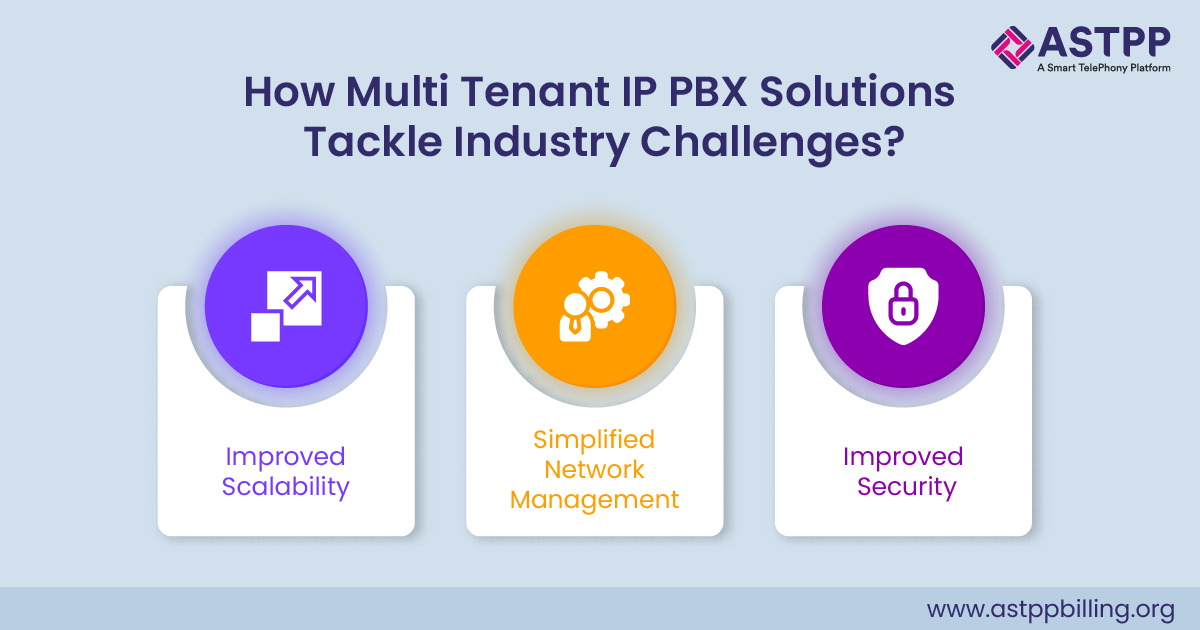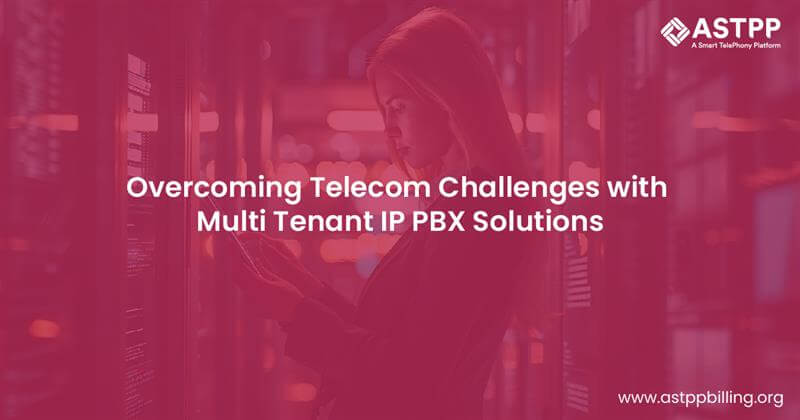The telecom industry has undergone rapid change in the last few decades. The proliferation of mobile devices, the rise of VoIP (Voice over IP) services, and increasing reliance on cloud technologies have created unprecedented challenges for telecom providers. The customer’s expectations are changing they want more efficient, cost-effective, and secure solutions. Amidst all these complexities, businesses are increasingly adopting multi tenant IP PBX solutions to overcome the industry’s hurdles while ensuring seamless communication.
It further explores what is known as the definition of multi tenant IP PBX systems, some of the key challenges of the telecom industry, and how these advanced solutions help meet those challenges.
1. Definition of Multi Tenant IP PBX Solutions
A multi tenant IP PBX solution is a telephony system designed to serve multiple tenants or organizations from a single, centralized platform. Unlike traditional PBX systems, which are usually built for a single organization, multi tenant IP PBX software allows multiple clients to share infrastructure while maintaining complete independence.
Each tenant can customize his communication settings, manage extensions, and have access to features such as call routing, voicemail, IVR (Interactive Voice Response), and analytics. This makes multi tenant IP PBX systems a preferred choice for telecom providers offering cloud-based telephony services to businesses of all sizes.
2. Key Challenges in the Telecom Industry

Scalability Challenges
Accommodating Rapid Growth and Fluctuating Demand
The telecom industry exhibits cyclic demand fluctuations. For example, peak seasons or accelerating growth of new customers overwhelm the traditional systems. This makes scalability a considerable issue and creates performance bottlenecks and service disruptions.
Inefficient Resource Allocation
Conventional telecom systems cannot, by design, effectively reserve and use resources at optimum during peak periods. Probing too much into provisions means that the company’s finances are being wasted upon unproductive expenditure. Insufficient provisioning might mean unmitigated poor user experience
Read Also:- Unfolding the Future of Reselling: Leveraging a Multi Tenant IP PBX Solution
Cost Pressures
High Infrastructure and Operational Costs
Building and maintaining telecom infrastructure is costly. From hardware investments to operational expenses, the costs can weigh heavily on providers, especially small and medium-sized players.
Poor Cost Management and Optimization
Without advanced tools, telecom providers find it challenging to monitor and control costs effectively. Overheads in energy consumption, server maintenance, and personnel often escalate, reducing profitability.
Complex Network Management
Managing Diverse Network Components and Configurations
Telecom networks consist of several components, such as servers, routers, and software applications. This complexity necessitates sophisticated systems and expertise that add to the complexity.
Troubleshooting and Problem Solving Challenges
Downtime or failure in the telecom network affects thousands of users at the same time. The speedy identification and rectification of root causes of the problem is essential but, in many cases, obstructed by outdated systems.
Security
Protecting sensitive customer data and the network infrastructure
The telecom industry is one of the favorite targets for cyberattacks. More and more sensitive data are processed, so confidentiality and integrity become very important.
Mitigation of Cyber Threats and Vulnerabilities
From ransomware to DDoS attacks, telecom providers face a host of threats. These are mitigated through proactive steps and advanced security protocols.
3. How Multi Tenant IP PBX Solutions Address Challenges

Improved Scalability
Flexible and scalable architecture to support different kinds of workloads
This IP PBX system for the multi tenant is also engineered on scalable factors. Providers can readily expand and contract according to client’s requirements without investing on the added hardware. With that capability, service will remain interrupted-free during peak seasons.
Dynamically Managed Resource Allotment for Idealized Performance
These types of systems dynamically allot the usage of bandwidth and process performance in order to sustain all kinds of idealized performance amongst different clients. By means of an efficient traffic, telcos can maintain smooth-quality services.
Shared Infrastructure and Resources to Reduce the Cost of Operating
Multiple tenants share the IP PBX multi tenancy. The cost of a system in terms of hardware maintenance, power, and utility decreases as there is utilization in all resources. This becomes one of the most affordable alternatives for the telecom player.
Maximization of resources, avoiding wastage – ensures return on investment at a minimum operational overhead on services that could be more price-effective to offer at this point.
Streamline your business communication with custom Multi Tenant IP PBX software.
Simplified Network Management
Centralized Management Console for Easy Configuration and Monitoring
A multi tenant IP PBX system provides a centralized platform for managing all tenants. Administrators can configure settings, monitor performance, and resolve issues from a single interface, streamlining operations.
Automated Provisioning and Maintenance Processes
Advanced automation features allow telecom providers to deploy new tenants quickly, reducing manual effort. Automated updates and maintenance processes further minimize downtime and ensure smooth operations.
Improved Security
Robust Security Features to Safeguard Sensitive Data and Network Integrity
Multi tenant IP PBX solutions come with built-in security measures, including encryption, secure access controls, and firewalls. These features protect customer data and ensure compliance with regulatory standards.
Regular Security Updates and Patches to Address Vulnerabilities
The system is designed to receive frequent updates to counter emerging cyber threats. These updates help mitigate risks and maintain the integrity of the telecom infrastructure.
Conclusion
The telecom industry faces challenges such as scalability and cost pressures and complex network management and security threats, which require innovative solutions. The multi tenant IP PBX solution offers an all-round approach to tackle these issues. Its architecture is scalable, cost-effective, central management, and robust security features enable the telecom service provider to provide high quality services while still maintaining profitability.
With multi tenant IP PBX software, telecom businesses can take a lead in the competition of the market. Telecom businesses can ensure smooth and effective communication for their clients by being responsive to changing customer needs and staying on top of industry challenges.
In today’s world of growing customers’ expectations and technological revolutions, using a multi tenant IP PBX system is not an option, but a must for companies to sustain success. With advanced features, cost-effective solutions, and futureproof technology, our software is the key to unlocking new opportunities and achieving business growth. To book a free demo of multi tenant IP PBX solution, contact us.





